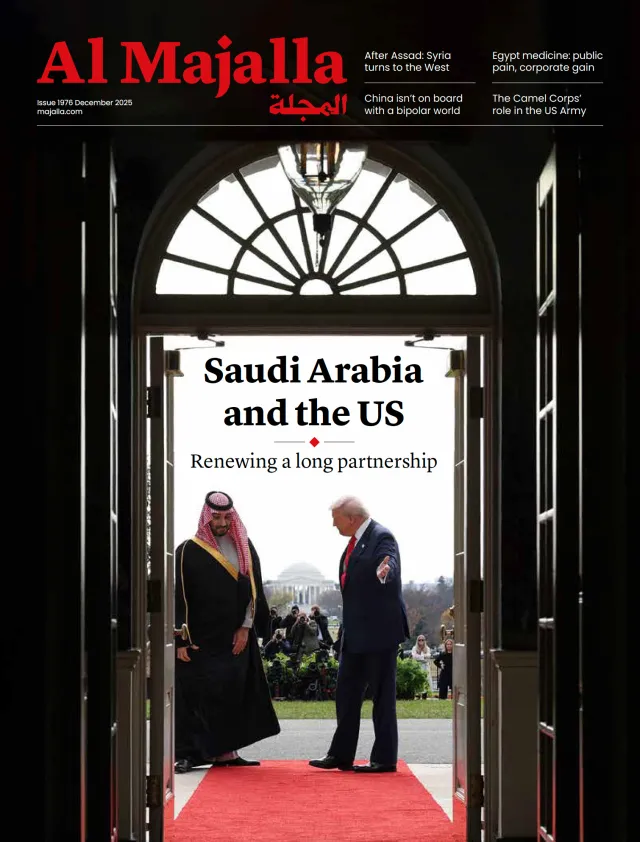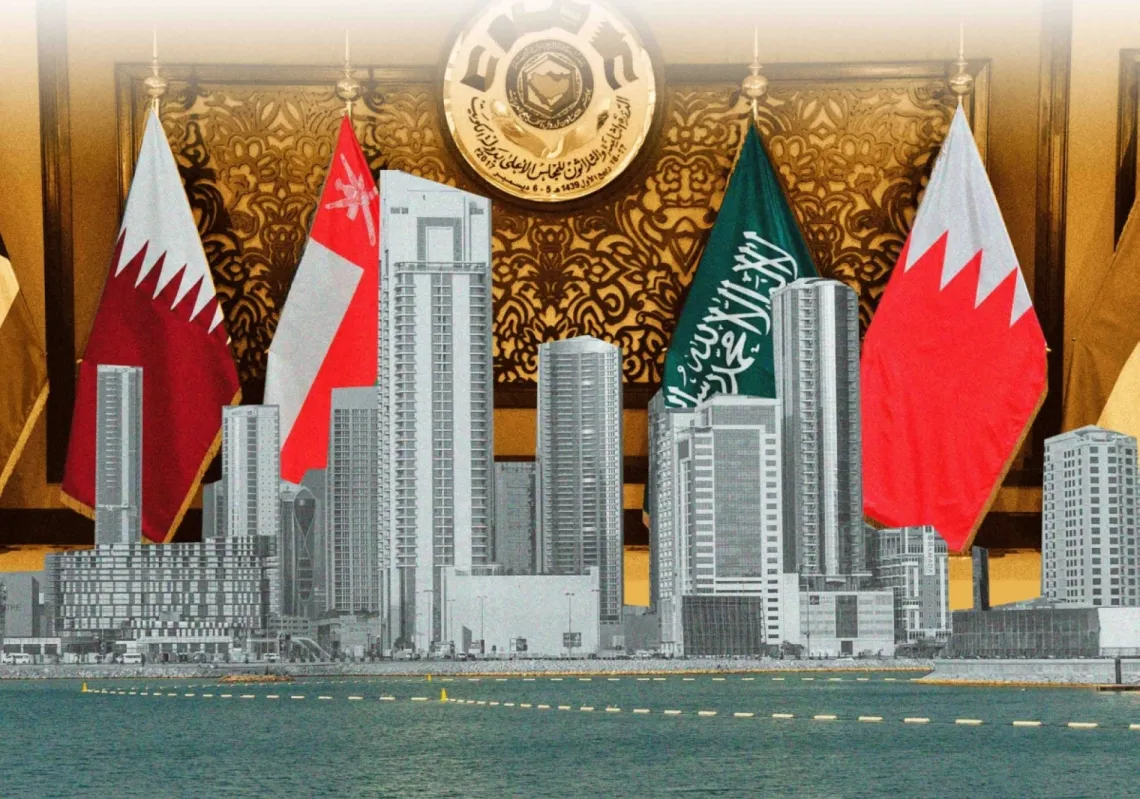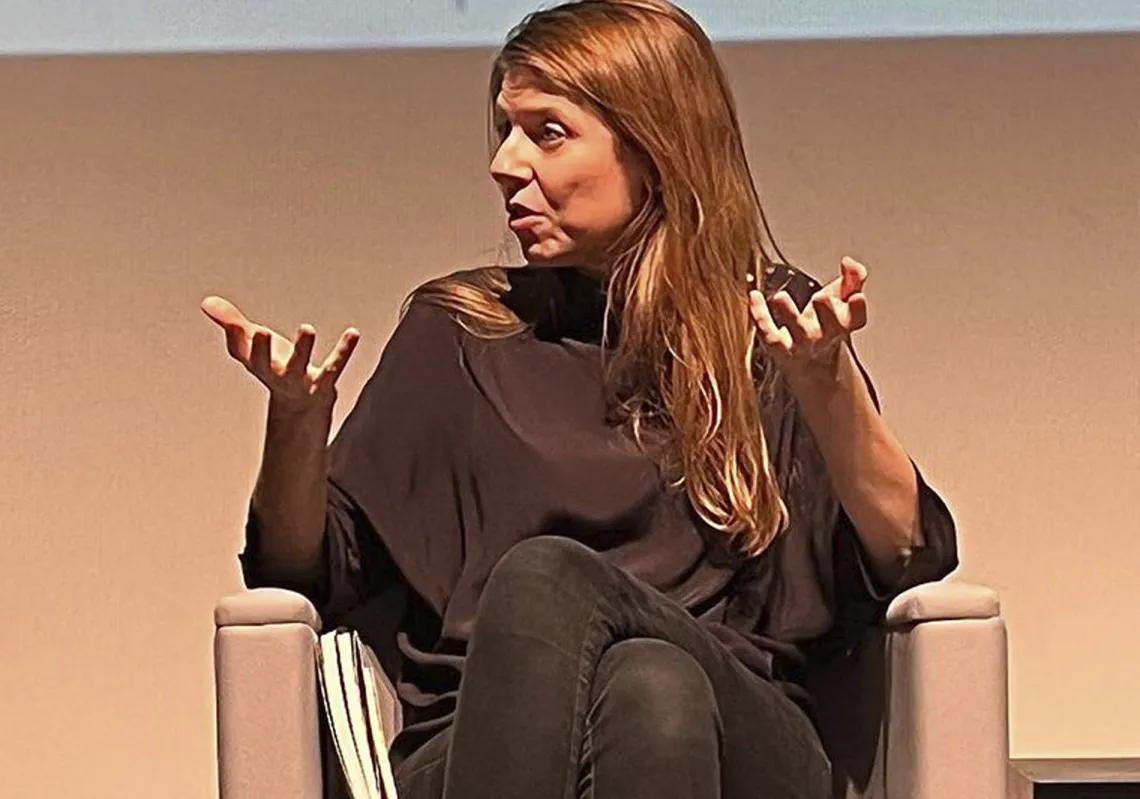In 1972, two years after Hafez al-Assad assumed power in Syria, a delegation from the Damascene Jewish community visited the office of Prime Minister Abdul Rahman Khleifawi. When asked about their request, they replied: "We wish to join the Ba'ath Party."
Khleifawi was stunned by this unexpected demand and inquired about their reasons. One of them responded: "And why not? Are we not Syrian citizens? Is there any legal or constitutional barrier preventing us from joining the ruling party?" Khleifawi replied in the negative but said that he would have to speak to al-Assad first, who replied with a firm: "No."
In truth, the Jews had no real desire to join the Ba’ath—they merely sought to assert their Syrian citizenship before the authorities, affirming that they were no different from other minorities like the Christians, Druze, and Shiites.
The issue of Damascus’ Jewry re-emerges today after a number of them returned for a visit following the collapse of Bashar al-Assad’s regime on 8 December 2024. Foreign Minister Asaad al-Shaibani received them during his recent visit to New York, and last February, Rabbi Youssef Hamra, the spiritual leader of Syrian Jews in America, visited Damascus and toured the Jewish Quarter in the Old City.
Then, on 29 April 2025, a delegation of expatriate Jews reopened the historic Al-Franj Synagogue, founded by Jewish refugees fleeing Spanish persecution after the fall of al-Andalus in the late 15th century. They held prayers there for the first time in decades and are now in the process of reclaiming their homes in the old Jewish Quarter, which were once the most splendid residences in Damascus, adorned with intricate ceilings, frescoed halls, and courtyards filled with lemon, citron, and bitter orange trees.
Since the collective Jewish exodus from Damascus back in the 1990s, they have refused to sell or rent these homes, leaving them shuttered for decades—until the regime forcibly opened them to displaced families after the Syrian revolution erupted in 2011. Under Bashar al-Assad, entering the Jewish Quarter required a security permit, and journalists were barred from documenting the extensive damage to sites or the Jobar Synagogue and other Jewish properties.
As for the remaining Jews in Syria today, no one can provide an exact count. Some say there are only nine elderly individuals left; others estimate between 17 and 20, who have stubbornly refused to leave despite economic hardship, food shortages, power outages, and repeated Israeli airstrikes—even when they could have sought refuge anywhere after 2011.
End of World War I
In December 1918, two months after the Ottoman evacuation from Damascus, a delegation from the World Zionist Organisation arrived, composed of Jacob Mosseri (an Egyptian Jew) and David Yellin, deputy mayor of Jerusalem. Their mission was to assess the condition of the city’s Jews, gauge their receptiveness to Zionism, and explore opening a Zionist office in the Old City with hopes of infiltrating Damascene society through direct engagement with community leaders.
Damascus was still reeling from the ravages of World War I—famine, fear, and chaos—when its new ruler, Emir Faisal bin Hussein, sought to establish Arab rule after four centuries of Ottoman control. Under his brief reign (1918–1920), Muslims, Christians, and Jews were granted equal rights and duties. Jews were permitted to join the military, and the Damascene Jewish merchant Joseph Lanidu became their representative in the Syrian General Congress, the country’s first legislative body.
The Hakham Bashi (Chief Rabbi), Jacob Danon, stood alongside Emir Faisal during his coronation on 8 March 1920, alongside the Mufti of Damascus and Christian patriarchs. Danon, a Jerusalemite appointed by Istanbul’s Chief Rabbi Moses Levi eight years prior, was a devoted guardian of his community. He accepted a 600 Egyptian pound donation from the visiting Zionist delegation to clothe Jewish orphans and restore the Al-Franj Synagogue.

At the time, Damascus’ Jewish population numbered no more than 15,000 out of 300,000 residents. In their report to Dr. Chaim Weizmann, Mosseri and Yellin noted that "there are no Western (Ashkenazi) Jews here—only Mizrahi and a handful of Sephardim expelled from Spain and Portugal in the 15th–16th centuries." Some of them had settled in the Jewish Quarter in eastern Damascus and the village of Jobar northeast of the Old City, while others spread to Aleppo in northern Syria and Qamishli in the northeast.
The most famous Jewish school was the Alliance Israélite Universelle, known for its high-quality curriculum and exemplary teaching staff. But it was closed by order of Djemal Pasha, commander of the Ottoman Fourth Army, although he did allow the Alliance Girls’ School to remain open after its director, Augustin Hayamov, pleaded with him.
Under the pretext of spreading diseases and epidemics, including cholera and the plague, Djemal shut down the remaining Hebrew schools in Damascus, displacing a large number of their students, who roamed the streets searching for food or work. Poverty and illiteracy became hallmarks of this small community, which had once been known for its modern institutions, such as the Zalikha Bank behind Damascus Citadel, advanced schools, and the quality of its products and craftsmanship.
In the not-so-distant past, the Jewish community of Damascus had been so wealthy that it owned the most beautiful palaces in Damascus and bribed high-ranking Ottoman officials with specially minted gold coins inscribed with the phrase “What God wills, shall be.”
Djemal Pasha prohibited the renewal of Jewish residence permits and banned the use of Hebrew names. When he expelled Zionist representative and author Arthur Ruppin from Jaffa in September 1916, the latter told him: “I hope we meet again, Your Excellency Pasha.” Jamal replied: “Perhaps—but in Germany, certainly not here!”
Even before the war, the Jewish community was suffering and in decline, due to citywide economic hardships and a noticeable decline in its population. No less than 1,500 young Jews had left Damascus, or roughly 10% of its population, seeking a better future in Egypt or Europe. Then came the flames of World War I, destroying what remained of the community's livelihood while claiming the lives of its youth.
Chief Rabbi Jacob Danon was forced to seek financial aid for his community from Arthur Ruppin, who was responsible for distributing aid sent from the US to Middle East Jewry. Danon's request was rejected, however, because members of his community were, ideologically and organisationally, far removed from the Zionist project—and thus, in the Agency’s words, “did not deserve material aid from American Zionists.”
After this rejection, Rabbi Danon turned to fellow Jew Henry Morgenthau, the US ambassador to Istanbul, after learning that $50,000 had arrived from New York for Jewish immigrants in Palestine. This plea too was also denied, leaving Damascene Jews in higher poverty and more deprivation, ensuring they would have no recourse except the Zionist movement, which came to their doorstep in the winter of 1918 and offered its services, albeit under specific political conditions.
Jewish migration to Palestine had begun in the last quarter of the 19th century, with their numbers rising from 23,000 in 1882 to 85,000 by the end of 1914. That year, due to the outbreak of World War I, migration routes were closed, and Ottoman authorities began pursuing Jewish activists in Palestine, fearing their ties to the British.
In the first three years of the Great War, at least 2,000 Jewish migrants were sent from Palestine to Damascus, most of them Ashkenazi Europeans. They worked in Palestinian villages and towns as teachers, journalists, or doctors, without speaking Arabic. Damascene Jews received them with a cold shoulder, refusing to house them in the Jewish Quarter, deliberately raising rents, while wealthy families like the Farhis, Totahs, and Linadus declined to fund their charities, for fear of association with Zionism.
This dismissive treatment left a deep impression on the migrant Jews, including David Yellin himself, who never forgot the suffering he and his fellow European Jews had endured during their forced and brief stay in Damascus.
He remarked, “Our suffering meant nothing to them. They do not know generosity, do not love strangers, nor do they trust them.” Isaac Lefni, one of the exiled European Jews in Damascus during the war, added: “No saviour or helper came to us from the Jews of this city while we were in prison. It seems this place—Damascus—will be our grave.”

Under Faisal (1918–1920)
David Yellin recalled all these feelings upon his return to Damascus and sarcastically remarked that the city had become “a home for the elderly,” as the remaining Jews of Syria were “on the edge of the grave.” He continued:
There is only one synagogue in the Jewish Quarter, and it is poor and neglected. There is only one pharmacy, established fifteen years ago—and unfortunately, it is run by a non-Jew.
In all the reports submitted to the Zionist Agency about Damascus Jewry and their conditions, the focus was squarely on poverty, with no mention of the wealthy members of the community or their commercial and social roles, nor of their strong attachment to their Syrian identity.
The Jewish delegation stayed in Damascus for a full week, visiting several neighbourhoods and meeting with members of the Jewish Council: Moses Totah, Joseph Abadi, Joseph Lanidu, Joseph Farhi, Moses Moas, and Nathan Qattash. All of them declared that they were “Damascenes before they were Jews,” rejecting any affiliation with the World Zionist Organisation or accepting aid from it. Chaim Weizmann did not give up, however, and on 5 February 1919, sent a second delegation to Damascus, composed of Jacob Mosseri and Ben-Zion Meir Uziel, the Chief Rabbi of Jaffa. The new delegation aimed to convince Damascus’ Jews to migrate to the “Promised Land” and, when established, to become the founding fathers of the state of Israel.
Meanwhile, a Jewish engineer named Guillaume Hecker appeared, proposing a developmental project for Syria’s Jews titled “Rebuilding the City of Damascus.” He wanted to develop the Syrian capital with Zionist funds before emptying it of its Jewish component, ensuring the financial, scientific, and social readiness of the Jews when they were ready to re-settle in Palestine.
The goal, of course, was to showcase the architectural, financial, and artistic capabilities of the Zionist movement and to impress the Jews of Damascus. Hecker suggested purchasing homes in the Jewish Quarter, the Amara neighborhood, and the Bab Touma and Bab Sharqi districts—while providing monthly aid to the Jewish Quarter’s poor, modernizing Hebrew schools, building new homes for Syrian Jews, constructing a new synagogue, and restoring the old one.
He also proposed connecting the Jewish Quarter to Damascus’ tram network, but the financial bureau of the World Zionist Organisation rejected his project. Their priority was establishing new settlements in Palestine and developing existing Jewish housing there. Damascus came far later on their to-do list.
However, when word of these grand projects spread, Damascenes—especially the Jews—became optimistic. Businessmen hoped that their city was on the verge of major foreign investment, while the poor saw it as an opportunity for work and improved income.
Some began whispering in secret: “If we weren’t Damascenes, we wouldn’t have been deprived of this money.” Among those who decided to work with the Zionist Agency were Naim Ades, an administrative director at the Hejaz Railway Station; Jacob Mouchly, an inspector at the same station; and Joseph Abadi, a judge in the commercial courts. These three worked to instil Zionist ideology in the Damascus Jewish community through projects like a Jewish orphanage in April 1919, overseen by a Russian-Jewish merchant named Baruch Bayis, who owned a lighting shop in Marjeh Square. In his report to Chaim Weizmann, Baruch Bayis wrote:
"Damascus is unlike other cities in its relationship with the Zionist movement. It is on the borders of Palestine, and it is a disgrace for us to be so close and yet see its Jews living in such conditions. We expect no help from any other party—they will not do for us what they did for the Armenians fleeing Ottoman massacres years ago. And if they do, our souls will be the price.”
Based on these recommendations, the Zionist Agency decided that, from that point onward, it would no longer distinguish between Damascus’ Jews and world Jewry. It would now engage with Jewish civil organisations in Damascus, infiltrating them and seducing their members, especially the youth. The Agency ordered the disbursement of 800 Egyptian pounds monthly to support these organisations, with donations collected from American Jewish associations.

In Damascus, the “Immigration Committee” was established, along with the Hebrew Council, in May 1919, which sought to strengthen Hebrew among Jewish children and organise cultural and literary lectures in their quarter. On 26 July 1919, the Hebrew Council announced its first event—a ceremony commemorating the 15th anniversary of the death of Theodor Herzl, but Jewish notables boycotted the event, considering it provocative and futile, serving only to sour their relations with Muslims and place them under state surveillance.
The Zionist Agency also attempted to infiltrate the Amal association, which focused on educating Jewish girls, and the “Lovers of Jewish Theatre” society, which staged Molière plays at the Alliance Theatre. The most prominent and powerful Jewish civil organisation in Damascus at the time was the Kadima Club (a Hebrew word meaning “Forward”), founded on 14 October 1918; it aimed to revive the youth and organise civil work for Alliance School graduates.
The Zionist Agency appointed Dr. Aryeh Efron head of the health sector in the Jewish Quarter, with a monthly salary of 15 Egyptian pounds. He was an immigrant from Belarus and established a clinic for the Jewish Quarter, offering free medical examinations. Dr. Giacomo Artom, former director of the Italian Hospital in Cairo, was also sent to Damascus to study the environmental and health conditions of the Jewish Quarter, accompanied by a team of nurses, a Jewish midwife, a pharmacist, and new administrators for the Jewish orphanage.
Jewish youth then approached the Syrian government with a request to license a bilingual newspaper called Al-Sharq, to be published three times a week in both Arabic and Hebrew. Ibrahim Totah became editor-in-chief, assisted by Elias Sassoon, a graduate of the Alliance school and Beirut’s Jesuit University. Sassoon was an ambitious young man, no more than 20 years old at the time, close to Damascus’ notables and personally acquainted with Emir Faisal. When asked about his political leanings, he would say: “In patriotism, we and the Muslims are brothers. In religion, we are cousins.”
Al-Sharq publishers pledged to focus only on Syria while avoiding the thorny topics of Palestine and Jewish immigration entirely, also steering clear of Zionism except in language that aligned with the government’s official stance. Despite the government’s backing for the newspaper, suspicions arose about the real purpose behind establishing a Syrian newspaper in Hebrew.
The first issue of Al-Sharq was four pages: two in Arabic and two in Hebrew. It featured a front-page editorial about Syria’s Jews and their national role, signed by Elias Sassoon. A vicious campaign was triggered against the newspaper by Damascus-based Palestinian journalist Yousef Issa, who asked: “How can a Hebrew newspaper with suspicious aims be published in Damascus, the beating heart of Arabism?” The second issue was published on 9 July 1920, reduced to three pages: two in Arabic and one in Hebrew. The third issue, on 12 July 1920, dropped all Hebrew pages entirely. The fourth issue never materialised.
The French Mandate (1920–1946)
In 1936, Joseph Linadu (Damascus MP under King Faisal) returned to the limelight and was elected to the board of the Damascus Chamber of Commerce. He would also serve in Parliament until 1943, when the Jewish quota was transferred from Damascus to Aleppo before being abolished altogether after the 1948 Palestine War. His name appeared on electoral lists for the National Bloc, which opposed the French Mandate and included figures like Shukri al-Quwatli, Jamil Mardam Bey, and Faris al-Khoury.
Post-independence era (after 1946)
After the French withdrawal from Syria in 1946, the Zionist Agency avoided any significant activity in Damascus due to the unstable domestic political climate and the wave of coups after 1949, as well as Israel’s preoccupation with its own founding challenges.
During the years of the Syrian-Egyptian union (1958–1961), the number of Jews in Syria had dwindled to 2,000 in Damascus, 3,000 in Aleppo, and 1,300 in Qamishli. The Zionist Agency resumed its activities in March 1958 through Haim Shadmi and Jacob Shamush, who again encouraged Syrian Jews to emigrate, using the same old arguments and warning of the dangers of living under Gamal Abdel Nasser’s rule.
By November 1958, the Zionist movement successfully talked 44 Jewish families into leaving Damascus, and before the collapse of the Syrian-Egyptian union on 28 September 1961, another 23 Jewish families left Damascus and Aleppo, all heading to the United States.

Hafez al-Assad era
Jewish migration halted again during the secessionist period (1961–1963) and remained banned under Ba’athist rule, though Hafez al-Assad eventually permitted departures on the condition that Syrian Jews not go to Israel.
This issue was first raised by US President Jimmy Carter when meeting with Assad in Geneva in 1977, then again by President George H.W. Bush in Switzerland in 1990 after the Gulf War. And finally, during the Assad-Bill Clinton summit in Damascus in October 1994, the Syrian president finally gave his approval for Jewish emigration.
Over 2,500 Syrian Jews left their homes and ancient quarters overnight, emptying the Damascus Jewish Quarter of its inhabitants. The wind now whistles through the halls of its once-magnificent palaces, and between the years 2000 and 2010, the number of Jews in Syria was estimated at around 200: 150 in Damascus, 30 in Aleppo, and 20 in Qamishli.
Some of their abandoned homes were turned into tourist projects, such as the Shatah Palace (now the Talisman Hotel) and the Farhi Mansion (converted into a hotel). The Alliance School building was divided between UNRWA and a Palestinian kindergarten.












